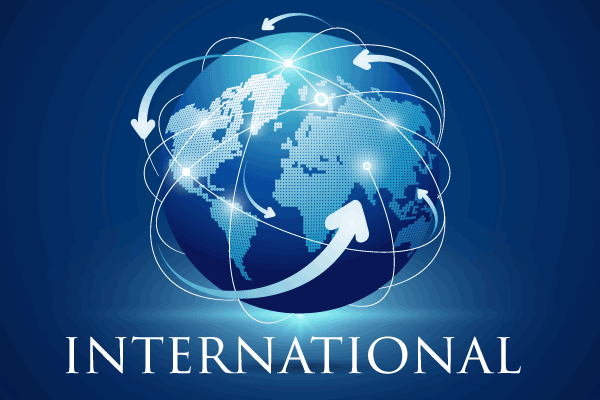
President Donald Trump’s trade policy announcements continued to create uncertainty this week, as well as affecting consumer prices, the stock market and consumer confidence.
On Wednesday, April 2 — which he called “Liberation Day” — President Trump announced new tariffs from the first Rose Garden ceremony, with a number of Cabinet officials and members of Congress in attendance.
According to the White House fact sheet, President Trump imposed responsive tariffs to “strengthen the international economic position of the United States and protect American workers.”
The President invoked his authority under the International Emergency Economic Powers Act of 1977 (IEEPA) to “address the national emergency posed by the large and persistent trade deficit that is driven by the absence of reciprocity in our trade relationships and other harmful policies like currency manipulation and exorbitant value-added taxes (VAT) perpetuated by other countries.”
New Tariffs Summary
- President Trump imposed a 10% tariff on all countries, effective April 5, 2025.
- President Trump imposed an individualized reciprocal higher tariff on the countries with which the United States has the largest trade deficits. All other countries will continue to be subject to the original 10% tariff baseline — effective April 9, 2025. See list of countries.
- These tariffs will remain in effect until President Trump determines that the threat posed by the trade deficit and underlying nonreciprocal treatment is satisfied, resolved, or mitigated.
- The executive order also contains “modification authority,” allowing the President to increase the tariff if trading partners retaliate or decrease the tariffs if trading partners take significant steps to remedy nonreciprocal trade arrangements and align with the United States on economic and national security matters.
- Some goods are not subject to the reciprocal tariffs, including steel/aluminum articles and autos/auto parts already subject to Section 232 tariffs; copper, pharmaceuticals, semiconductors, and lumber articles; bullion; and energy and certain other minerals not available in the United States.
- For Canada and Mexico, the existing fentanyl/migration IEEPA orders remain in effect, and are unaffected by the April 2 executive order. This means that United States-Mexico-Canada Agreement (USMCA)-compliant goods will continue to see a 0% tariff and non-USMCA-compliant goods will see a 25% tariff.
Auto Tariffs: Effective April 3
On March 26, President Trump signed a proclamation, Adjusting Imports of Automobiles and Automobile Parts Into the United States, invoking Section 232 of the Trade Expansion Act of 1962 to impose a 25% tariff on imports of automobiles and certain automobile parts.
- The 25% tariff will be applied to imported passenger vehicles (sedans, SUVs, crossovers, minivans, cargo vans) and light trucks, as well as key automobile parts (engines, transmissions, powertrain parts, and electrical components), with processes to expand tariffs on additional parts if necessary.
- Importers of automobiles under the USMCA will be given the opportunity to certify their U.S. content and systems will be implemented such that the 25% tariff will apply only to the value of their non-U.S. content.
- USMCA-compliant automobile parts will remain tariff-free until the Secretary of Commerce, in consultation with U.S. Customs and Border Protection (CBP), establishes a process to apply tariffs to their non-U.S. content.
According to the fact sheet provided the White House, the goal of the proclamation is to counter trade practices that threaten to impair U.S. national security, maintain a resilient domestic industrial base, and strengthen America’s manufacturing industry.
In 2024, Americans bought approximately 16 million cars, SUVs, and light trucks, and 50% of these vehicles (8 million) were imports, with the largest percentage being from Mexico. European automakers exported 749,000 cars to the United States in 2024.
Of the other 8 million vehicles assembled in the United States and not imported, the average domestic content is conservatively estimated at only 50% and is likely closer to 40%. Therefore, of the 16 million cars bought by Americans, only 25% of the vehicle content can be categorized as made in America.
The U.S. trade deficit in automobile parts reached $93.5 billion in 2024. If the tariffs are passed onto consumers, the average price for imported vehicles could increase by $12,500.
CalChamber Position
The California Chamber of Commerce is committed to supporting a national free trade agenda that fosters economic growth and job creation. The CalChamber will continue to focus on lowering tariff and non-tariff barriers to support the expansion of American exports.
While strategic use of tariffs or the threat of tariffs may be a meaningful negotiation tool, the CalChamber supports efforts to reduce the taxation and regulatory burden as a means to create jobs in economic growth.
Further, a focus on trade agreements instead will ultimately lower both tariff and non-tariff barriers and help create long-term, sustainable economic growth. The CalChamber opposes protectionist measures, which disrupt global supply chains, raise consumer prices, limit choices of products for consumers, hinder the competitiveness of California businesses, and invite retaliation.

